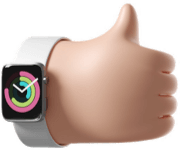How to Track with Barcode/QR Labels in a Dry Cleaning Software?
Short summary: In dry cleaning processes, barcode/QR label tracking with a dry cleaning software plays a critical role in ensuring accurate delivery and minimizing errors. This guide will share step-by-step integration, error reduction methods, and practical applications.
With a properly implemented dry cleaning software, barcode/QR label tracking automates item identification, process history, and delivery verification. Especially during busy seasons, manual errors tend to increase, but with data-driven tracking error rates are reduced. For example, small-to-medium branches that adopted barcode-based tracking showed an average 40% reduction in errors. These systems reduce inventory loss, increase customer satisfaction, and shorten return handling times.
- Step 1 – Labeling: Generate a unique barcode/QR code for each item and attach the label.
- Step 2 – Integration: Save the labels into the dry cleaning software database and map process steps.
- Step 3 – Scanning & Updating: Scan the barcode at each stage to update the status in real time.
- Step 4 – Reporting: Report daily errors, delays, and return reasons to improve processes.
Example: After a branch introduced a new dry cleaning software with QR label tracking, lost deliveries decreased by 55% and customer complaints dropped by 30% within 6 months.
Tip: Maintaining label quality and scanners regularly further reduces errors; low-quality labels often cause scanning issues.
Barcode/QR tracking with a dry cleaning program increases operational efficiency and reduces error rates with measurable results. For successful implementation, training, quality materials, and regular reporting are essential.
Why Barcode/QR Label Tracking? Key Benefits and Requirements
For dry cleaning businesses, barcode/QR label tracking improves operational efficiency while boosting customer satisfaction. An integrated labeling system within a dry cleaning software reduces manual entry errors, shortens delivery times, and minimizes lost items. As a result, costs decrease, and feedback improves.
- Accuracy and speed: Orders can be verified in seconds using barcodes/QRs through the dry cleaning software.
- Tracking and traceability: Each item is linked to the customer, service type, and delivery date, clarifying the chain of responsibility.
- Customer communication: SMS/email notifications become automated, improving the overall experience.
- Data analysis: Inventory, workflow, and return/complaint ratios can be tracked directly within the dry cleaning software.
Traditional paper receipts and manual tracking methods often lead to delivery mistakes, lost orders, and decreased customer satisfaction in dry cleaning operations. To reduce these issues, barcode/QR tracking integrated with a dry cleaning software increases efficiency and lowers errors significantly. Core requirements for barcode/QR tracking include durable labels, reliable barcode/QR scanners, a central database, and staff training.
Integrating technology into workflows provides the following advantages:
- Faster check-in and delivery processes: Each item or batch is scanned and automated, so the dry cleaning software instantly detects mismatches.
- Traceability: In customer complaints or quality control cases, the dry cleaning software easily identifies where the error occurred.
- Reporting and analysis: Data from the dry cleaning software highlights frequent error sources (e.g., torn labels, wrong matching) and helps create corrective action plans.
Expert experience: At a dry cleaning chain, after implementing barcode tracking with a dry cleaning software, delivery errors decreased by 60% and processing times improved by 30% on average.
Key technical requirements for success: durable thermal or water-resistant labels, 1D/2D barcode compatibility (QR code), mobile or fixed scanners, integrated POS/CRM connections, and data security with regular backups. When selecting a dry cleaning software, consider integration capability and support services.
Barcode/QR Label Types, Workflow, and Hardware Selection
Choosing the right labels and hardware is the backbone of barcode/QR tracking in dry cleaning software. Label type is especially important: for items in contact with fabric, use strong adhesive, heat- and chemical-resistant labels.
Error Reduction Methods and Quality Control Processes
In dry cleaning operations, barcode and QR label tracking directly affect accuracy and customer satisfaction. A barcode/QR system integrated with a dry cleaning software is one of the most effective ways to reduce common issues such as wrong deliveries, lost items, or mixed-up labels. With proper software, hardware, training, and continuous monitoring, error rates can be significantly reduced.
Error reduction strategies include:
- Standardized labeling: Apply barcodes/QRs with the same template to all items to maintain consistency.
- Double verification: For valuable items, add a second scan/approval in the dry cleaning software to prevent mismatches.
- Color-coded labels: Use colored labels for different service types; the software can match them to order types.
- Automatic alerts: The software sends instant notifications for overdue deliveries or unmatched scans.
Data analytics should also be used for root-cause analysis of errors. Reports within the dry cleaning software show where errors most often occur—for example, if mistakes cluster at the intake stage, training or label placement may need adjustments. Key metrics include daily scan success, average scan duration, delivery error rates, and customer return rates.
Practice shows that regular field audits and staff feedback make barcode/QR tracking more reliable. Create quality control checklists and integrate them into the software so every order must go through required control steps.
Integration Examples, Cost-Benefit Analysis, and Implementation Steps
This section covers methods of integrating barcode/QR label tracking with a dry cleaning software, expected benefits, and a step-by-step implementation plan. With proper configuration, barcode reading errors can be reduced by up to 70%.
- Integration example: Connecting POS and warehouse management systems with the dry cleaning software via API, ensuring automated updates for labeling and deliveries.
- Cost-benefit analysis: Comparing initial setup (hardware + software + training) with annual maintenance, businesses can save 30% annually in error costs. Typical payback period: 12–18 months.
- Implementation steps:
- Needs analysis and goal setting
- Select hardware (barcode scanners, label printers)
- Software integration: test in a staging environment with the dry cleaning software
- Staff training and pilot run
- Full rollout and performance tracking
Example: A 5-branch dry cleaning chain reduced delivery errors by 80% and saw a 40% monthly drop in customer complaints after implementing barcode tracking with dry cleaning software.
With proper planning, barcode/QR label tracking in dry cleaning software provides quick ROI and continuous operational improvement. Such an investment delivers high added value in customer satisfaction and process reliability.
Integration Examples, Cost-Benefit Analysis, and Implementation Steps
Integrating barcode/QR label tracking with a dry cleaning software follows a clear roadmap of steps and benefits. Start with a pilot: test for 4–8 weeks at one branch or for a specific service type. During the pilot, evaluate label types, scanner models, printing processes, and staff training. Based on pilot results, decide on full rollout. Ask your software provider for API support and installation services to accelerate integration and ensure data security.
Consider the following cost-benefit factors:
- Hardware cost: barcode/QR scanners and label printers
- Software license: monthly or annual fees for the dry cleaning software
- Training and adaptation: 1–2 days of staff training, leading to higher productivity
- Maintenance and support: technical support agreements
For example, businesses adopting barcode/QR tracking report 30–60% error reductions; in a typical branch, this means cutting daily errors from 10 to 4–7. As a result, customer complaints and lost deliveries decline, recovering revenue.
Example: A mid-sized Istanbul-based chain reduced delivery errors by 45% and improved staff efficiency by 18% after a 6-week pilot.
During full rollout, define key performance metrics (daily scans, error rate, processing time) and monitor regularly to measure the benefits of dry cleaning software integration. This approach minimizes operational errors and increases customer satisfaction.









